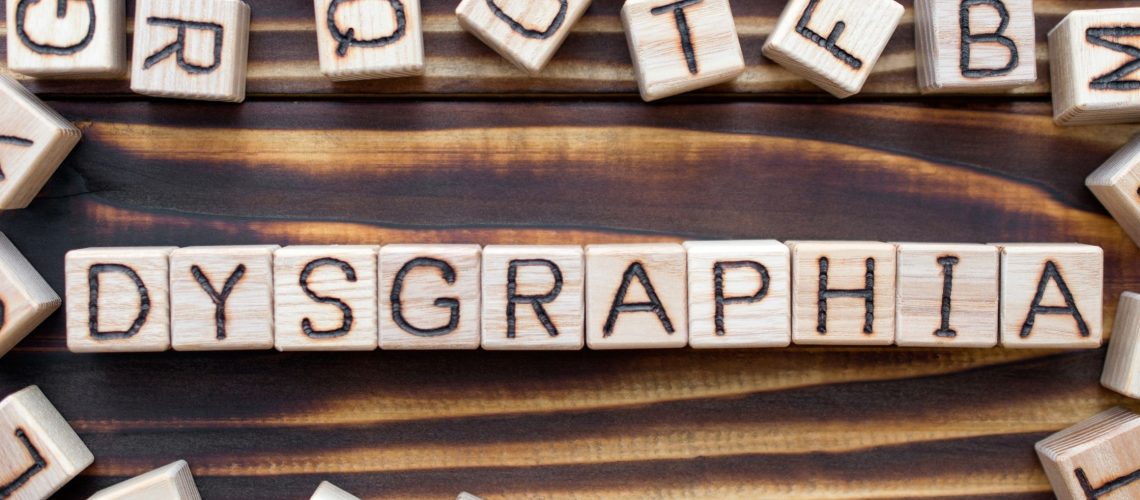Dysgraphia is when students, whether adults or children, struggle to learn to write. It can manifest in various symptoms, including difficulties with spelling, poor handwriting, and trouble putting thoughts on paper. Dysgraphia interferes with practically all aspects of the writing process, including spelling, legibility, word spacing and sizing, and expression. This kind of disability is not uncommon, however. Between 5 and 20 percent of children have some version of dysgraphia.
Causes of Dysgraphia
Researchers are still learning the reasons why some children have learning disabilities, including dysgraphia. Learning disabilities often run in families or are related to prenatal development, such as premature birth. Children with dysgraphia often have other learning disabilities. For example, children who have attention-deficit hyperactivity disorder (ADHD) have a higher risk of dysgraphia since attention is closely linked to writing and reading abilities. In adults, dysgraphia is typically associated with brain injury, disease, or degenerative conditions that cause the individual to lose previously acquired writing skills.
Types of Dysgraphia
The different types of dysgraphia include:
- Motor dysgraphia – Poor fine motor skills characterize this form of dysgraphia. Someone with motor dysgraphia could also suffer from poor dexterity. Written work, including copied work and drawings, tends to be poor or illegible. Any legibility in writing takes an intense amount of effort. Spelling abilities are usually within the normal range.
- Spatial dysgraphia – Spatial dysgraphia results from issues with spatial awareness. Words and letters are typically crammed together, while a child might color outside the coloring book’s lines. All forms of handwriting and drawings from individuals with spatial dysgraphia are usually illegible. Spelling skills are not typically impaired.
- Linguistic dysgraphia – Linguistic dysgraphia impacts the language processing skills required in the writing process. It most strongly affects spontaneously written text, which is often illegible. Drawing, copying, and oral spelling are not affected by linguistic dysgraphia.
Symptoms of Dysgraphia
Dysgraphia can cause varying symptoms at different ages. Symptoms also depend on the type of dysgraphia a person experiences. Some people may have only impaired handwriting or only impaired spelling, while others will have both. Common symptoms of dysgraphia include:
- Tight, awkward pencil grip and body position
- Illegible handwriting
- Avoiding writing or drawing tasks
- Tiring quickly while writing
- Saying words out loud while writing
- Unfinished or omitted words in sentences
- Difficulty organizing thoughts on paper
- Difficulty with syntax structure and grammar
- The large gap between written ideas and understanding is demonstrated through speech.
Diagnosis of Dysgraphia
The diagnosis of dysgraphia often involves several specialists, including a doctor or pediatrician, occupational therapist, and psychologist. Other conditions can cause difficulty in writing, like poor sight, so a doctor will need to rule out physical problems first. Afterward, a psychologist should be able to diagnose dysgraphia. To do this, psychologists may use:
- Academic tests
- Fine motor skill challenges
- IQ tests
- Writing tests, such as writing sentences or copying words
During these tests, the learning disability specialist will observe the person’s pencil grip, hand and body position, and writing process. The finished piece will also be examined later for signs of dysgraphia.
Treatment of Dysgraphia
There is no medication to treat dysgraphia. Treatment varies from child to child and depends on whether they have any other learning disabilities or health conditions. Occupational therapy may help improve handwriting skills. Therapeutic activities include:
- Holding a pencil or pen in a new way to make writing easier
- Working with modeling clay
- Tracing letters in shaving cream on a desk
- Drawing lines within mazes
- Doing connect-the-dots puzzles
Managing Dysgraphia
For some people, occupational therapy and motor skills training can help improve their writing ability. For others, dysgraphia remains a lifelong challenge. If you have a child with dysgraphia, it’s important to work with your child’s school and teachers on appropriate accommodations for this learning disability. Some classroom and homeschool strategies that may help include:
- A designated note-taker in the classroom
- Use of a computer for notes and other assignments
- Oral exams and assignments, instead of written ones
- Extra time on tests and assignments
- Lesson or lecture notes provided by the teacher as printouts, recordings, or in digital form
- Pencils or other writing implements with special grips to make writing easier.
- Use of wide-ruled or graph paper
Dysgraphia can be challenging, but early intervention and treatment can help your child manage symptoms and reduce the impact of dysgraphia on his or her life. It is important to advocate for your child and assure that they have the interventions and resources they need early! For more help, search Anything Academic for support for Occupational therapy and neurocognitive evaluations. Diagnosis and support are key to success.

